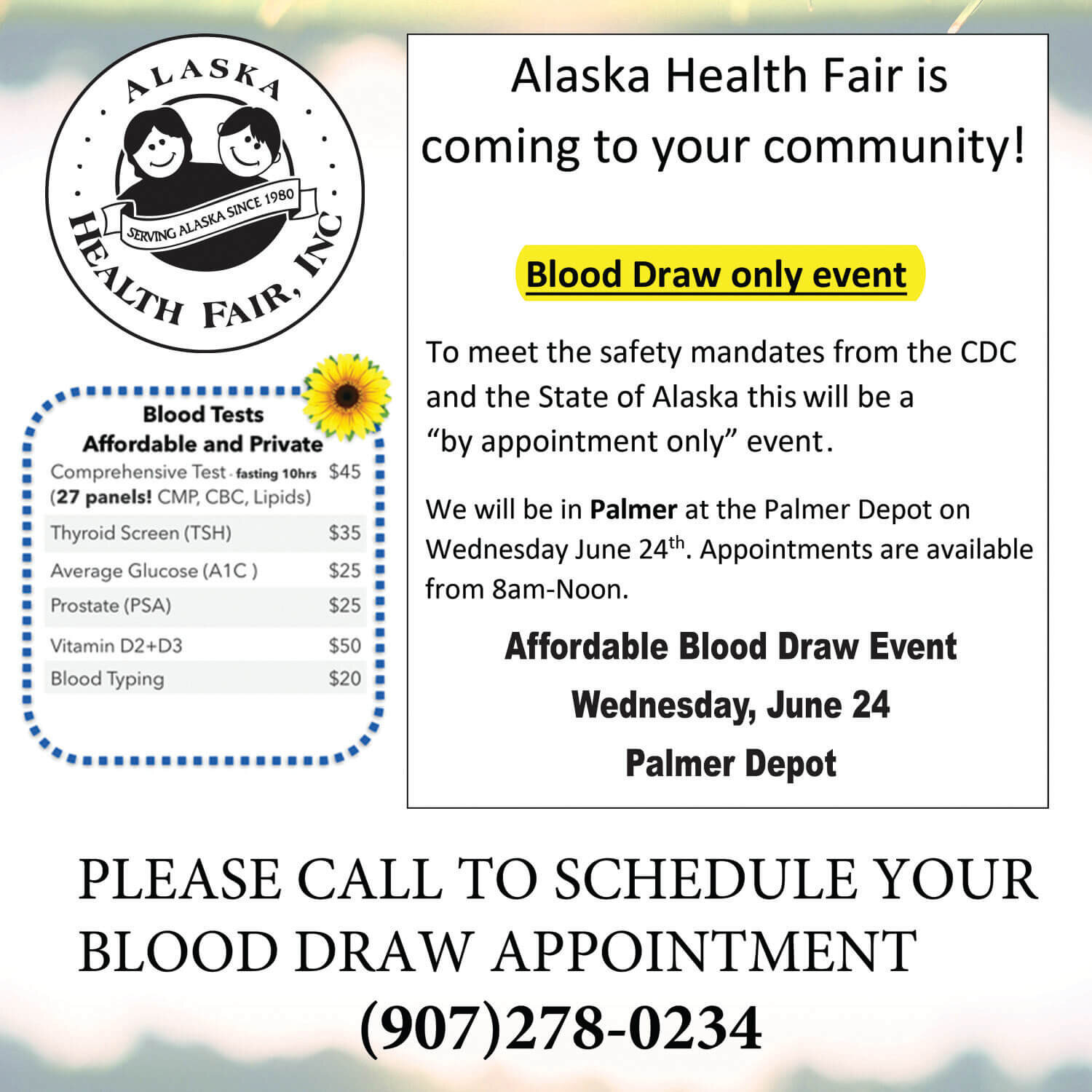Contributed by Jeffrey L. Sponsler, MD
By now, you have heard that the Copper River King Salmon season is cancelled. Why? Because there are no fish swimming up the raw, but beautiful Copper.
The king sport fishing season was cancelled April 1st in Southeast Alaska. The closure of king salmon fishing was ordered to preserve the few fish that actually come back to their home rivers to spawn. On April 6th, Wrangell cancelled its King Salmon Derby due to a steep decline in the number of fish returning to spawn. On June 22nd, Alaska wildlife officials ordered restrictions on subsistence fishing in the Glennallen district. Why? No fish - escapement goals would not be met without the restrictions. On June 21st, the State announce that king salmon fishing was shut down on the Susitna River.
Biologists state that part of the blame falls on the “blob” of warm water in the Gulf of Alaska. This warm water kills young chinooks when they swim out to sea. There are some persons who think that the real culprit is by-catch in the nets of West Coast ocean trawlers. The by-catch are dumped overboard (they are injured or dead when they hit the water). So, let's take a look at “by-catch”.
The estimated worldwide annual by-catch is 63 billion pounds (representing 40 percent of the total catch). You read that correctly, almost half of all sea life caught is wasted (tossed back into the ocean). Technically, by-catch is non-target fish and ocean wildlife. The numbers by animal groups are astounding: 650,000 whales, dolphins and seals were killed per year from 1990 to 2000 around the world. So, for 10 years total that would be 6.5 million sea mammals. National Marine Fisheries Service (NMFS) data suggest that about 20 percent of fish caught in US fisheries are discarded before reaching port; that would amount to 2 billion pounds of by-catch per year. The ancient shark species are really hard-hit in the factory fishing practices: 100 million sharks are estimated to be killed each year worldwide. So in 10 years, that would be 1 billion sharks.
And what about turtles? Everybody loves turtles. Cute, peaceful creatures that first were noted in the fossil record at 250 million years ago. They are ancient. In the Gulf of Mexico, the shrimp trawler industry drowns 50,000 turtles per year. Turtles do not have gills and must surface to breath every 55 minutes (that's amazing). So, all the trawler have to do is pull up their nets once per hour to save most of the turtles from drowning. But, they do not routinely do this simple practice. Keep the nets down more than one hour and the turtles drown.
Would you like another order of shrimp cocktail? In 2013, the US NMFS withdrew a proposal to require turtle exclusion devices (TEDs) for trawlers in the Gulf of Mexico. The use of the TED devices ideally allows all by-catch larger than ten centimeters (10 cm.) to escape the nets unharmed. This selectivity is achieved by metal grids integrated into the trawl net structure. The grids act as a barrier for large creatures such as turtles from passing through the bars into the back of the net.
So, how do these factory ships catch fish? There are three main strategies: longline fishing, gillnets and trawling. Longline fishing involves setting out a very long line (up to 50 miles) with many baited hooks. The hooks catch anything that will go after the bait - anything and that would include mammals, birds, sharks, fish, turtles and so on. The other major fish technology is trawling. Trawling involves dragging a weighted net (that might be 2 miles long) along the bottom of the ocean. The trawling disrupts coral and other habitat and captures anything and everything in its path. The net is hauled in periodically, the target fish are extracted and everything else is tossed dead and dying overboard. Trawling is the most ecologically disruptive of the fishing techniques. Trawling for shrimp is the worst practice insofar as for every pound of shrimp that is caught, 10 pounds of fish is wasted.
Gillnets are essentially “walls of death”. The nets are set in the water and can be up to two miles long. The net starts at the surface and extends down hundreds of feet and fish and sea mammals become entangled in the net. The United Nations has banned gillnets more than 1-mile-long, but the US allows gillnets in most fisheries. Unclear if the UN is actually enforcing this ban. In the California gillnet industry, 550 marine mammals were killed in five years.
In the Gulf of Alaska, the flatfish trawling industry (that is flounder and sole) has a 35% discard rate. That means that they waste 35 of 100 pounds of fish caught. In this fishery, 34 million pounds of fish were thrown overboard in one year, including 2 million pounds of halibut and 5 million pounds of cod. (Are you still wondering, “Where are all the king salmon?”) The economics of by-catch are bizarre: Based on research data, the fish caught in the Alaskan flatfish trawler industry were worth 10 million dollars annually where the discarded fish were worth up to 17 million dollars. The trawler ships come from Japan, Seattle, Russia and many other countries. There are probably 70 trawlers raking the bottom of Alaska's productive seas.
Why is there no monitoring of this ecological catastrophe? No easy answer here, but there are no police or officials on the factory ships. In Alaska, only 25% of factory ships is monitored for by-catch statistics; 50% of all catch is unmonitored.
Who is responsible for monitoring and policing fisheries? In the waters off of the coast of Alaska and the mainland United States, that would be the National Marine Fisheries Service. In Alaskan waters, NMFS observers cover the trawler industry for by-catch at a 20% level. That means that 80% of the trawler activity is not monitored. The unmonitored ships are supposed to report on by-catch; they probably do not report accurately, no way to know. Some communities demand coverage. There is reportedly 100 percent observer coverage in the Bering Sea/Aleutian Island area. This is the result of Native fishermen alerting officials that there were no king salmon.
There are some fishing communities that are fighting back. In 2016, the Alaska Board of Fisheries banned trawlers from Unalaska Bay (at the request of Unalaska Native Fisheries Association). According to the Anchorage Daily News, “Harvest of walleye pollock in Unalaska Bay over the past 10 years has ranged from 0.9 to 7.3 million pounds taken by an average of 8 vessels. During the most recent five years, harvest of pollock annually averaged 3.1 million pounds taken by an average of six vessels, with an average vessel size of 120 feet. Based on walleye pollock fish ticket records, during the past five years, Pacific cod was estimated as the largest source of by-catch with an average of 55,822 pounds, followed by Atka mackerel with average annual by-catch of 2,165 pounds. The estimated average annual Pacific herring by-catch was 1,379 pounds. Estimated by-catch of Pacific halibut averaged 1,484 pounds annually. Estimated by-catch of Pacific salmon was 2,343 pounds, made up almost entirely of chum and king salmon. Estimated by-catch of sockeye, pink and coho salmon was minimal, estimated annually about 50 pounds. The majority of Pacific cod and Atka mackerel was sold, while Pacific salmon, halibut and herring were primarily discarded at the dock with a small amount processed for donation,” according to Fish and Game.
Here are some interesting quotations from Jacque Yves Cousteau:
“For most of history, man has had to fight nature to survive; in this century, he is beginning to realize that, in order to survive, he must protect it.”
“Water and air, the two essential fluids on which all life depends, have become global garbage cans.”
“We are living in an interminable succession of absurdities imposed by the myopic logic of short-term thinking.”
“The sea, once it casts its spell, holds one in its net of wonder forever."
“How many of these people rise to their feet or fall to their knees in cathedrals, temples, synagogues, mosques, reciting the word of their God by rote, all the while ignoring the living word of God just outside the window? How many read scriptures that praise their God’s creation, but acquiesce when damage is done to it?"
"Mankind has probably done more damage to the Earth in the 20th century than in all of previous human history."
"It is fashionable nowadays to talk about the endless riches of the sea. The ocean is regarded as a sort of bargain basement, but I don't agree with that estimate. People don't realize that water in the liquid state is very rare in the universe. Away from earth it is usually a gas. This moisture is a blessed treasure, and it is our basic duty, if we don't want to commit suicide, to preserve it."
Based on my readings as reported above, the salmon are being destroyed by the factory ships. In Alaska, the email address is alaska.webmaster@noaa.gov. Let the fisheries’ managers hear your voice on this issue. Your senators are Lisa Murkowski (907-456-0233) and Dan Sullivan (907-456-0261) and Don Young (202-225-5765). You may easily email these politicians, as they have contact pages on their websites. Let them know that you are aware of why there are no king salmon this year. Request reductions in factory fishing and wasteful destructive by-catch. Demand they protect our ocean based natural resources.


















































